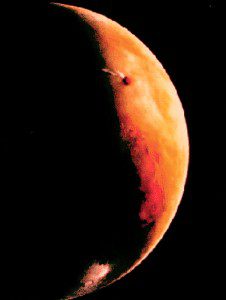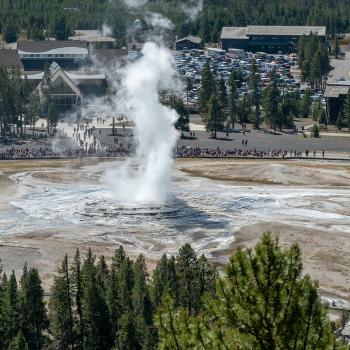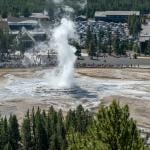
(Click to enlarge)
An article in the 20 December 2014 issue of the Economist discusses the question of methane gas on Mars, which is, by far, the most studied planet (other than Earth, of course) in our solar system.
Most of the results sent back by interplanetary probes have suggested that Mars is biologically and geologically dead. That is, that there is no life on it and that it lacks active volcanism, plate tectonics, and so forth.
But “most” is not quite all.
And one of the tantalizing questions that remain involves the quantity of methane in the Martian atmosphere. The planet should have some, but probably not much.
There is reason to believe, however, that atmospheric levels of methane fluctuate considerably on Mars. Dramatic evidence of this surfaced on 16 December, just a month ago, when the scientists in charge of Curiosity, NASA’s latest and most sophisticated Mars rover, published their most recent report. Curiosity, which had previously detected only tiny and unexciting quantities of the gas (averaging 0.69 parts per billion), suddenly registered a nearly ten-fold surge (to 7.2 parts per billion) that sustained itself for roughly two months. Indeed, some studies have even suggested occasional levels as high as sixty parts per billion.
Such periodic spikes in methane levels pose fundamental questions. They could be caused, perhaps, by residual geological processes, of course, or even, most excitingly, by bacterial respiration. But the most pressing immediate problem is what happens to the methane gas once it has mysteriously appeared. Every indication is that the methane levels fall back down relatively rapidly within a few months. But how this happens is unknown. Ordinary destruction of methane by ultraviolet radiation from the sun — which is the only known natural “scrubbing” process — would require about three centuries.
One suggestion is that a meteorite bearing organic materials may have struck near to where Curiosity was gathering its data. The methane gas would have been blown away by powerful Martian winds.
The trouble with this hypothesis (which was proposed by Dr. Christopher McKay, a planetary scientist affiliated with NASA’s Ames Research Center) is that searches have failed to detect any new meteor craters in Curiosity’s neighborhood.
Fortunately, a Russo-European spacecraft, the ExoMars Trace Gas Orbiter, is slated to go into orbit around Mars in 2016. As its name suggests, it’s designed to detect atmospheric gases from high above the Martian surface. Perhaps it will settle the questions posed by methane on Mars.











